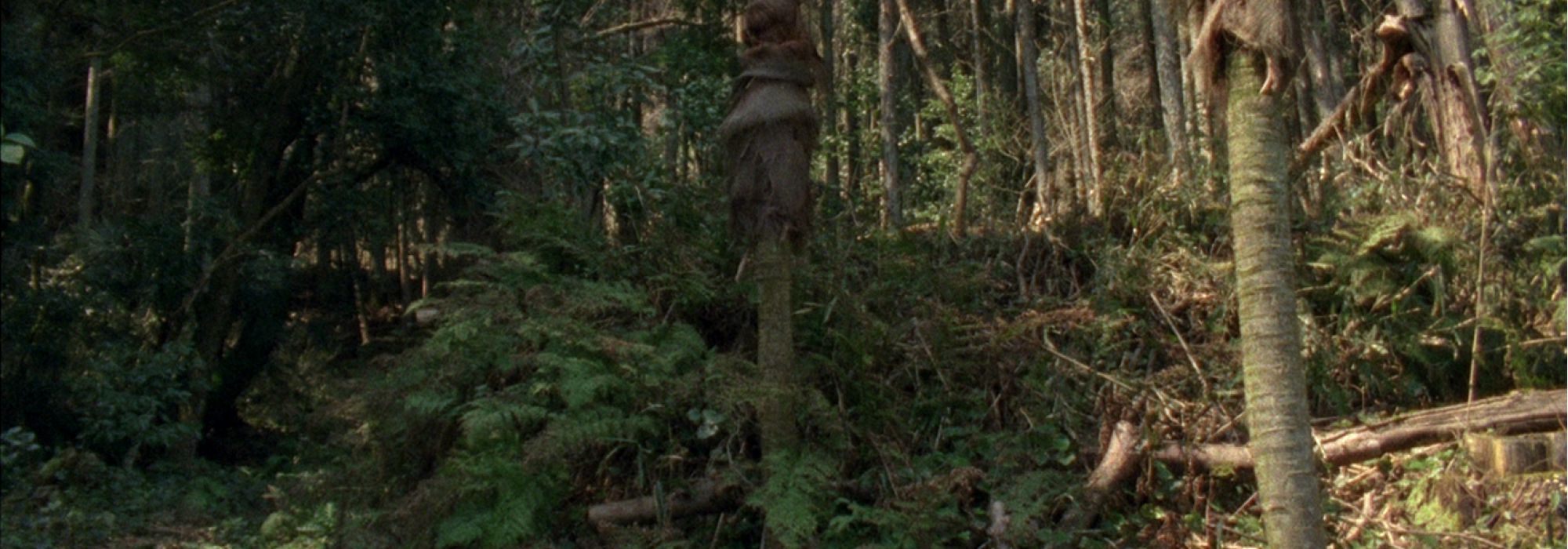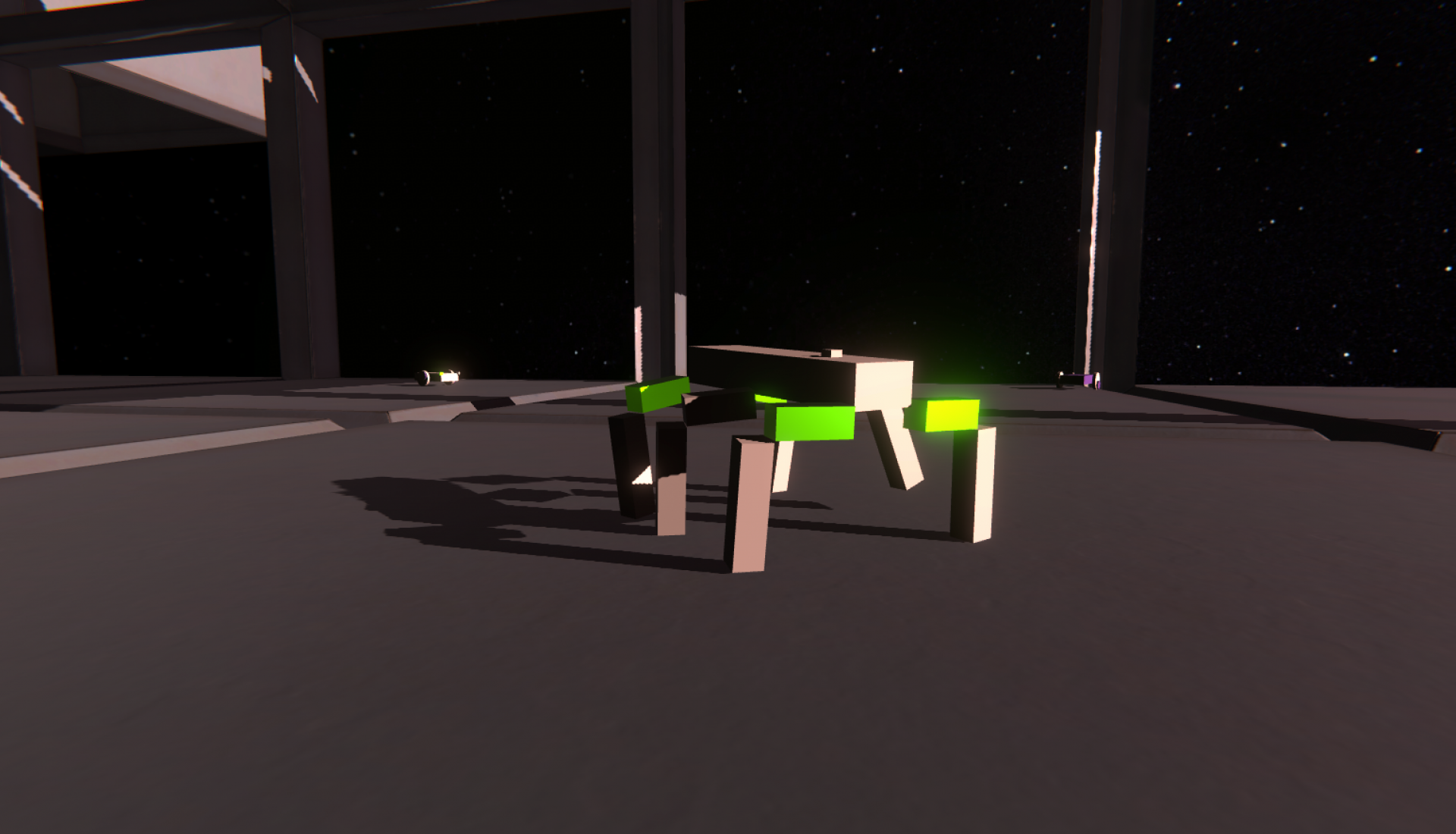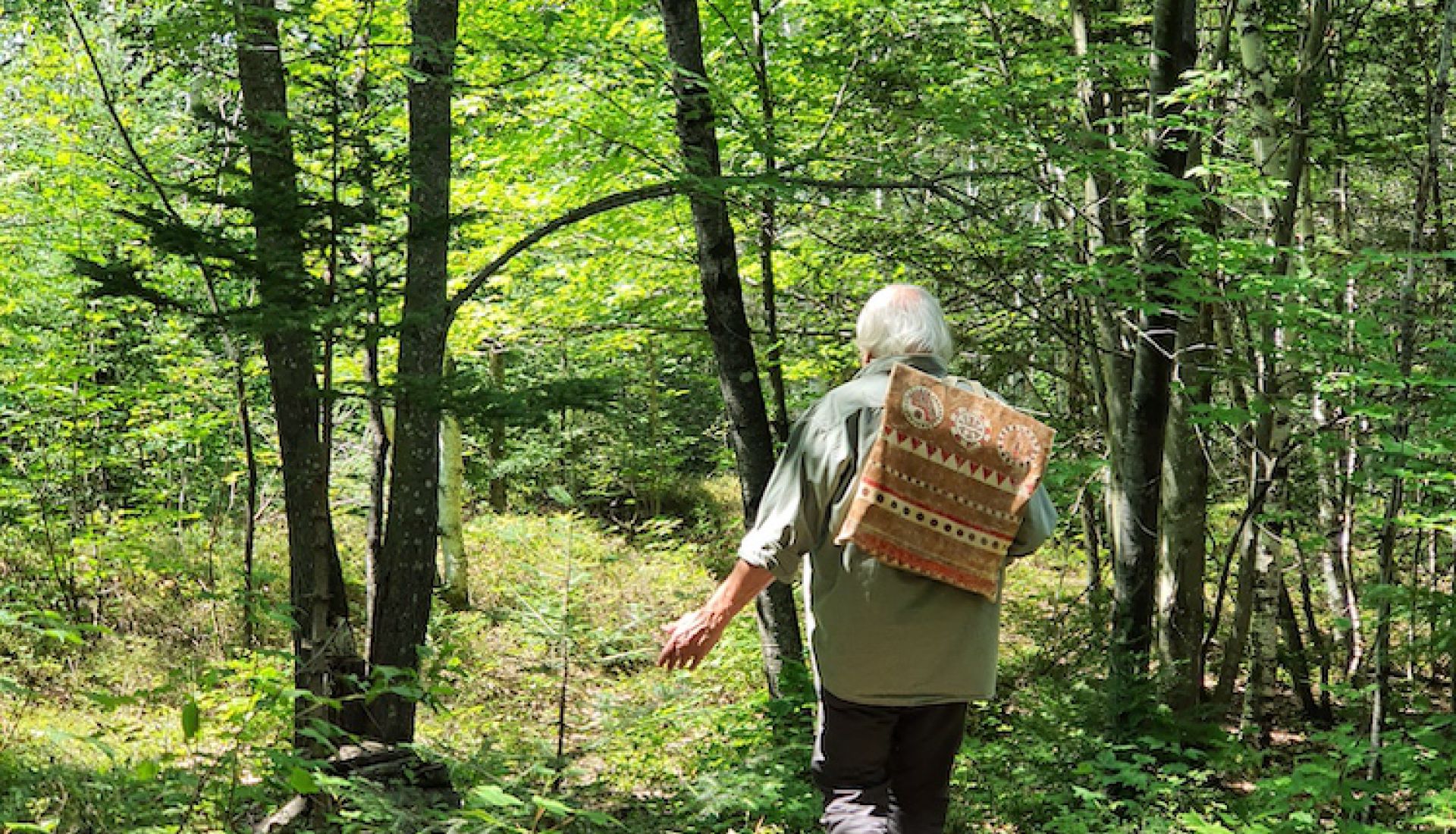“Hmm, magnificent tree! It has been around since long ago … back in the time when people and trees used to be friends.”
(father Tatsuo in My Neighbor Totoro, 40min, 20s)
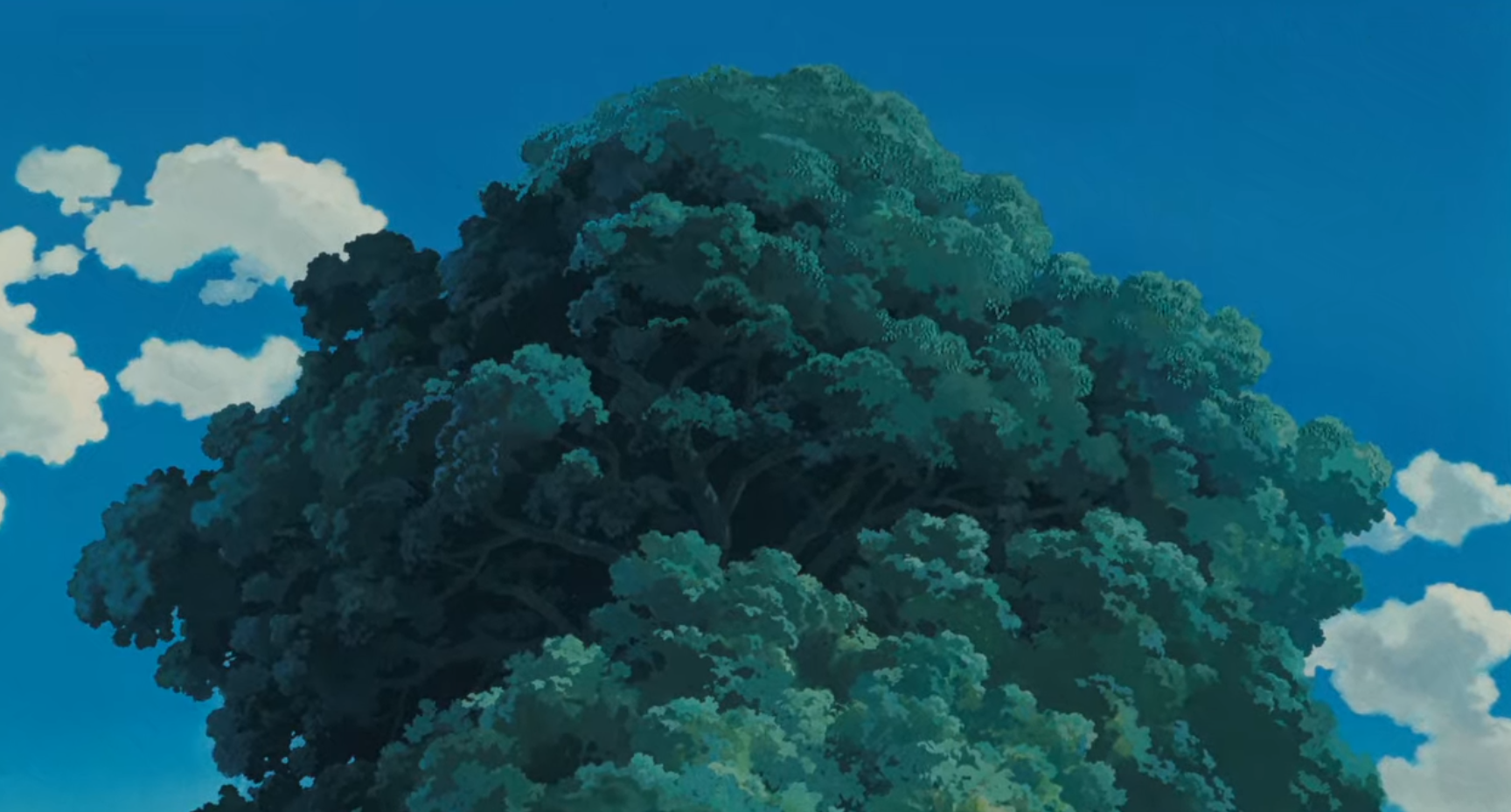
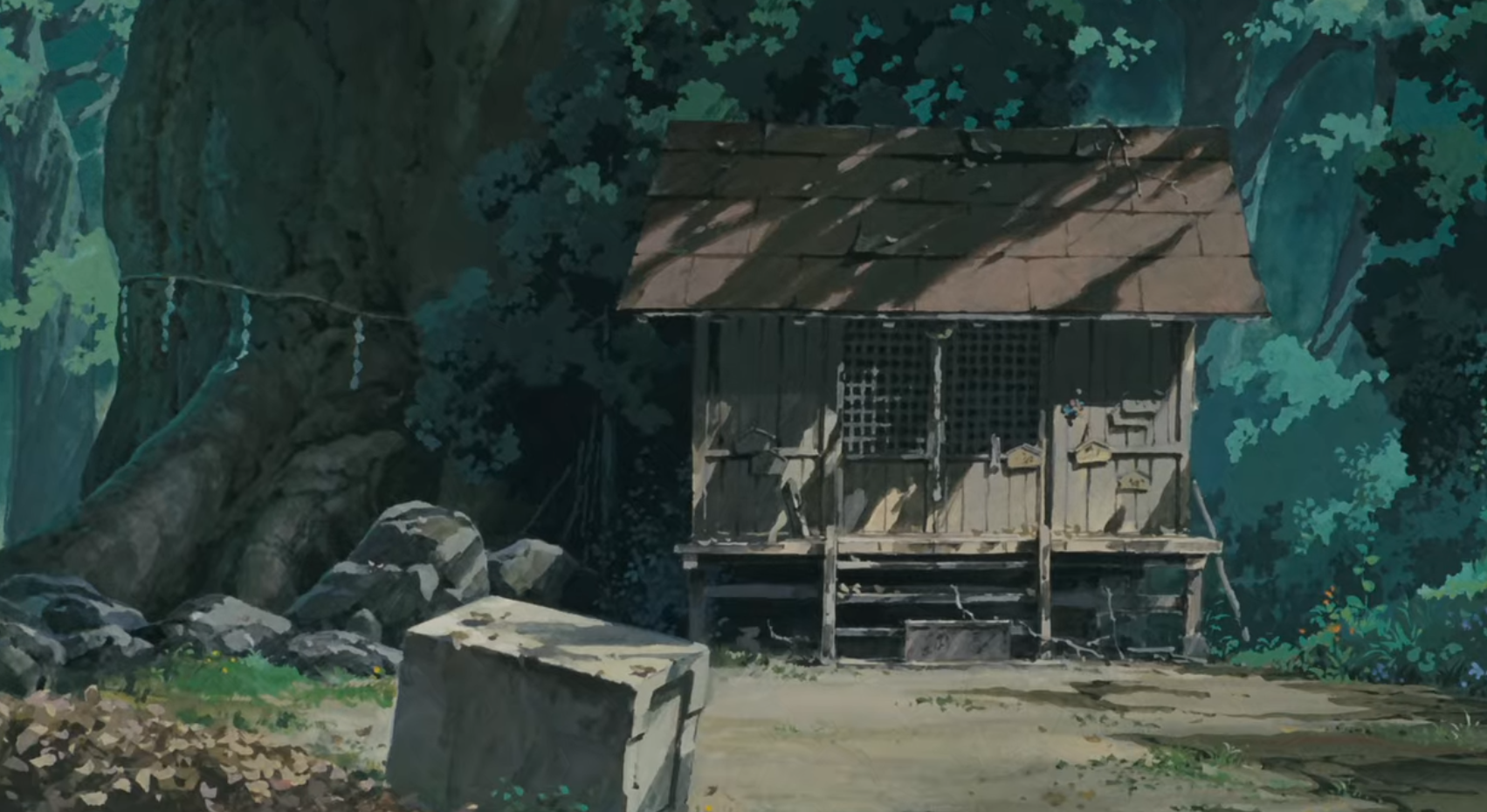
Fig. 1 & 2, "My Neighbor Totoro" (1988), Hayao Myazaki (studio Ghibli), retrieved from https://www.youtube.com/watch?v=S19k5S0GlNo (0:30, 2:04)
Animistic Weave
In the Japanese anime classic My Neighbor Totoro (1988) by famous animation director Hayao Miyazaki the specific cultured landscape called Satoyama plays a crucial role for the intricate relation between two girls, Mei and Satsuki, and the surrounding ecologies of natural, sensuous and spiritual origin. Sato means village and yama translates as hill or mountain rendering Satoyama into the land between village and mountain – it is a specific place and an interstitial zone. In the film the quest for living with nature becomes synonymous with the way humans and more-than-humans inhabit and animate one plane of existence. Upon arrival at their new countryside home the small family greets the tree and the spirit it might be holding, signified by the Shimenawa (“enclosing rope”) signaling the tree as a Yorishiro an object capable of attracting spirits (kami). The Camphor tree is the entry and gateway to Totoro’s home – a giant fluffy cat spirit that could be conceived as the "mori no nushi," or "master of the forest", an animistic figure which holds the status of a kami, that is, a holy of divine power in Shintoism. In the film an animating relay opens up through the encounters on a more-than-human activating plane. This plane weaves the human, spiritual and natural along their enabling powers for living and inhabiting the world differently from normative rationalities. Challenging these rationalities and their underlying power structures fuels current discourses around animism in the arts and humanities from which I draw in my further elaborations.
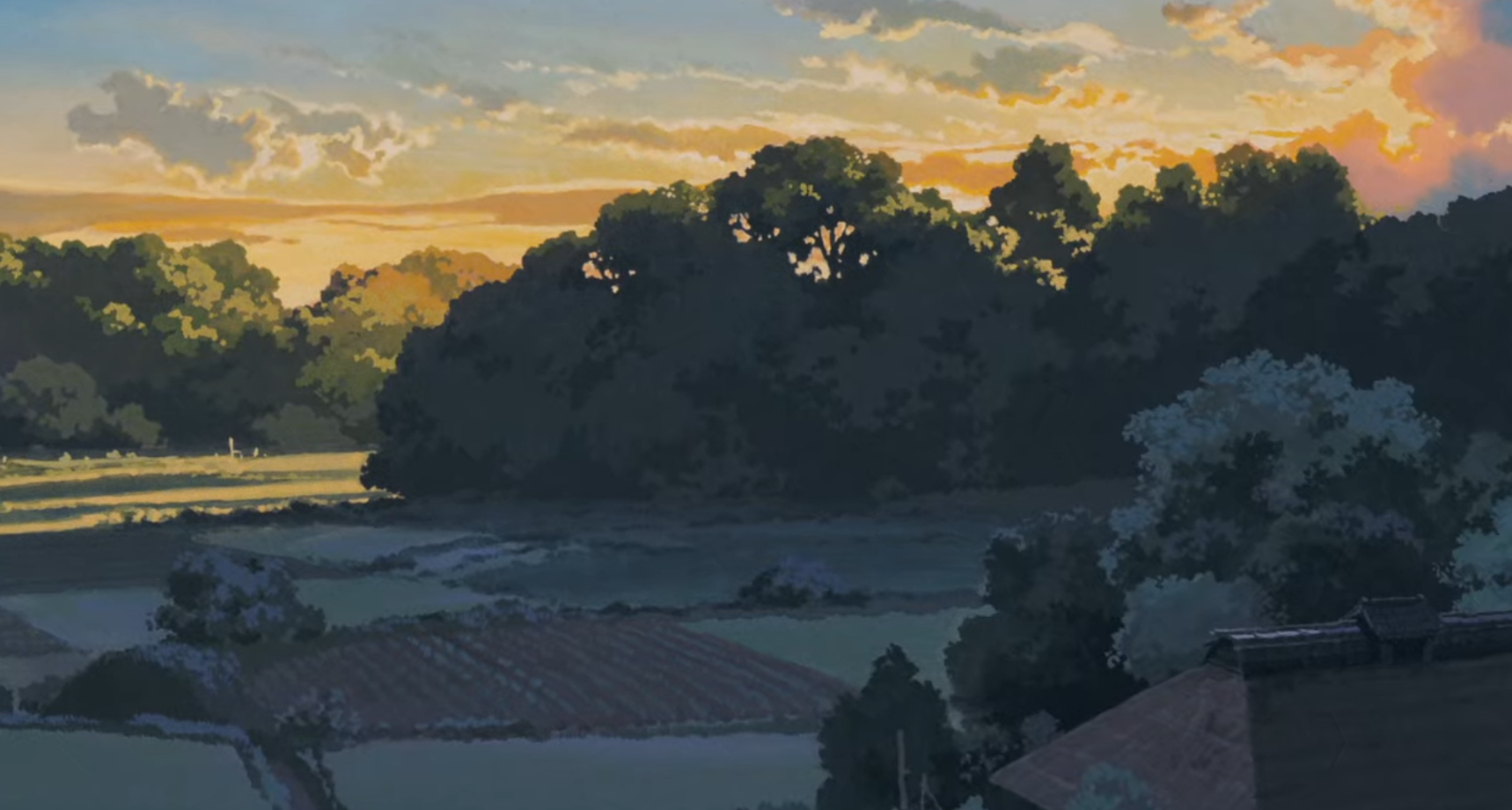
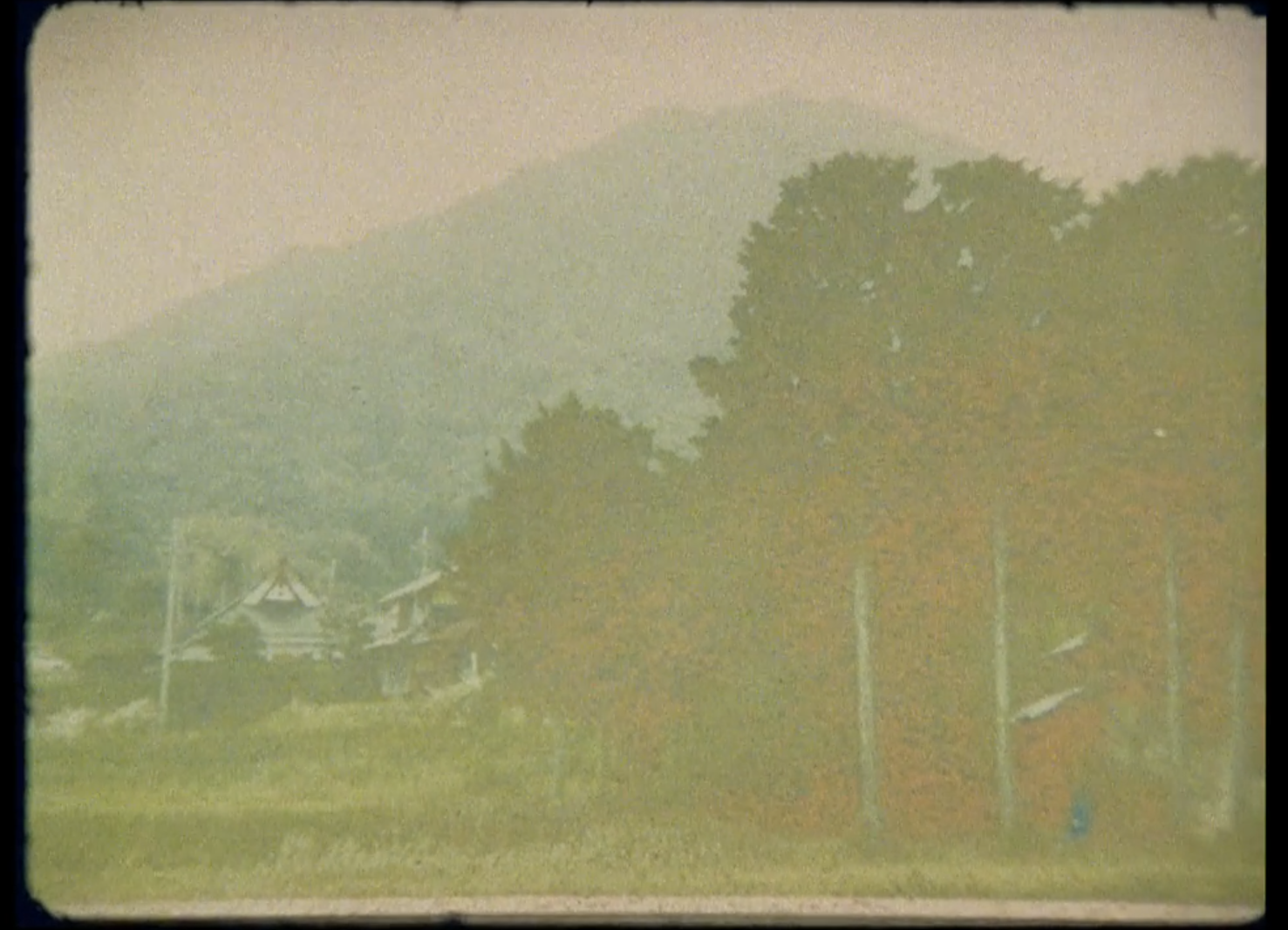
Fig. 3, "My Neighbor Totoro" (1988), Hayao Myazaki (Studio Ghibli), retrieved from https://www.youtube.com/watch?v=S19k5S0GlNo (0:07)
Fig. 4, "Shape Shifting" (2015), Mikhial Lylov & Elke Marhöfer (with permission from the artists) (10:42)
The animistic world of My Neighbor Totoro engages the viewer in much more than a kid’s movie. It tells a differentiated story of companionship and relational fields of experience which transgress the boundaries of nature–culture, human–more-than-human. Apart from the animated spirits of Totoro and his fellows (including a magical cat bus) the film eschews a mere anthropomorphism of usually non-human entities, as known from the Western contexts, such as Walt Disney’s animations, in particular Alice in Wonderland (1951), or Sergei Eisenstein’s writings about them (see Eisenstein 2010 and Lamarre 2018 as a critique of Eisenstein).
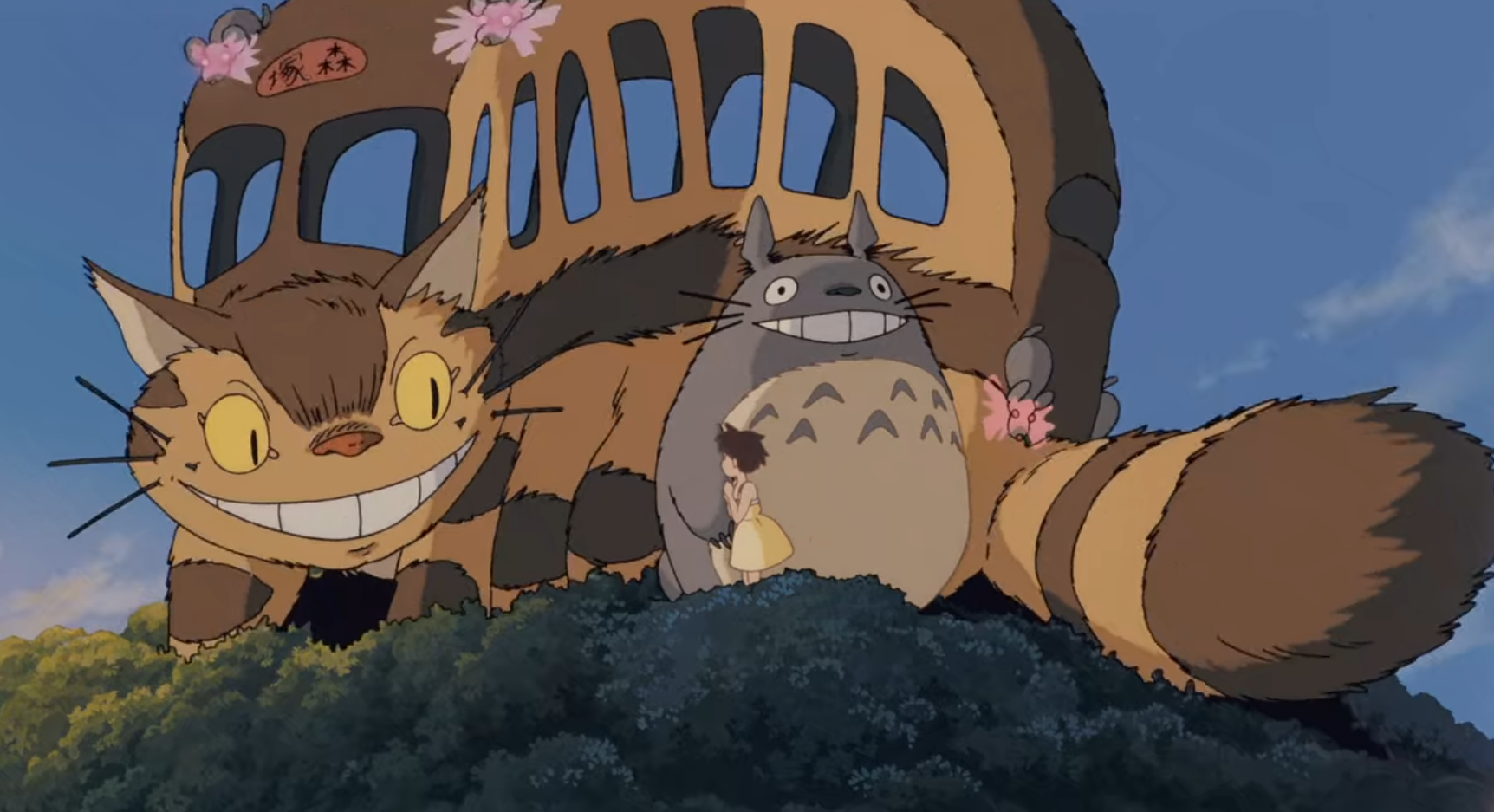
Fig. 5, "My Neighbor Totoro" (1988), Hayao Myazaki (Studio Ghibli), retrieved from https://www.youtube.com/watch?v=92a7Hj0ijLs (0:40)
In My Neighbor Totoro the relations of being neighbors, of co-inhabiting and overlapping without necessary fusion or synthesis are guiding lines for the unfolding narrative in which the two girls perceive and engage with the spirit of Totoro and its supernatural abilities while actually not leaving the world where trees might be addressed as spirits while remaining to be trees. What holds these animistic relations together is not a mere human imaginary or a spiritualism but, as I want to argue, a deep engagement with the land and the landscape as activating material ground to weave relations and generate new expression, or, as Donna Haraway suggests (and before here many indigenous practices), to create stories and narratives that matter (2016, 10). This mode of existence and co-inhabiting as animated and activating underscores a continuous attention of “becoming-with” and becoming as an individuation of different processes, such as a tree, a body, a thought, and their embeddedness in a temporality geared towards activating potentials, which I attribute to an animist approach (see also Franke 2010 and Stengers 2011).
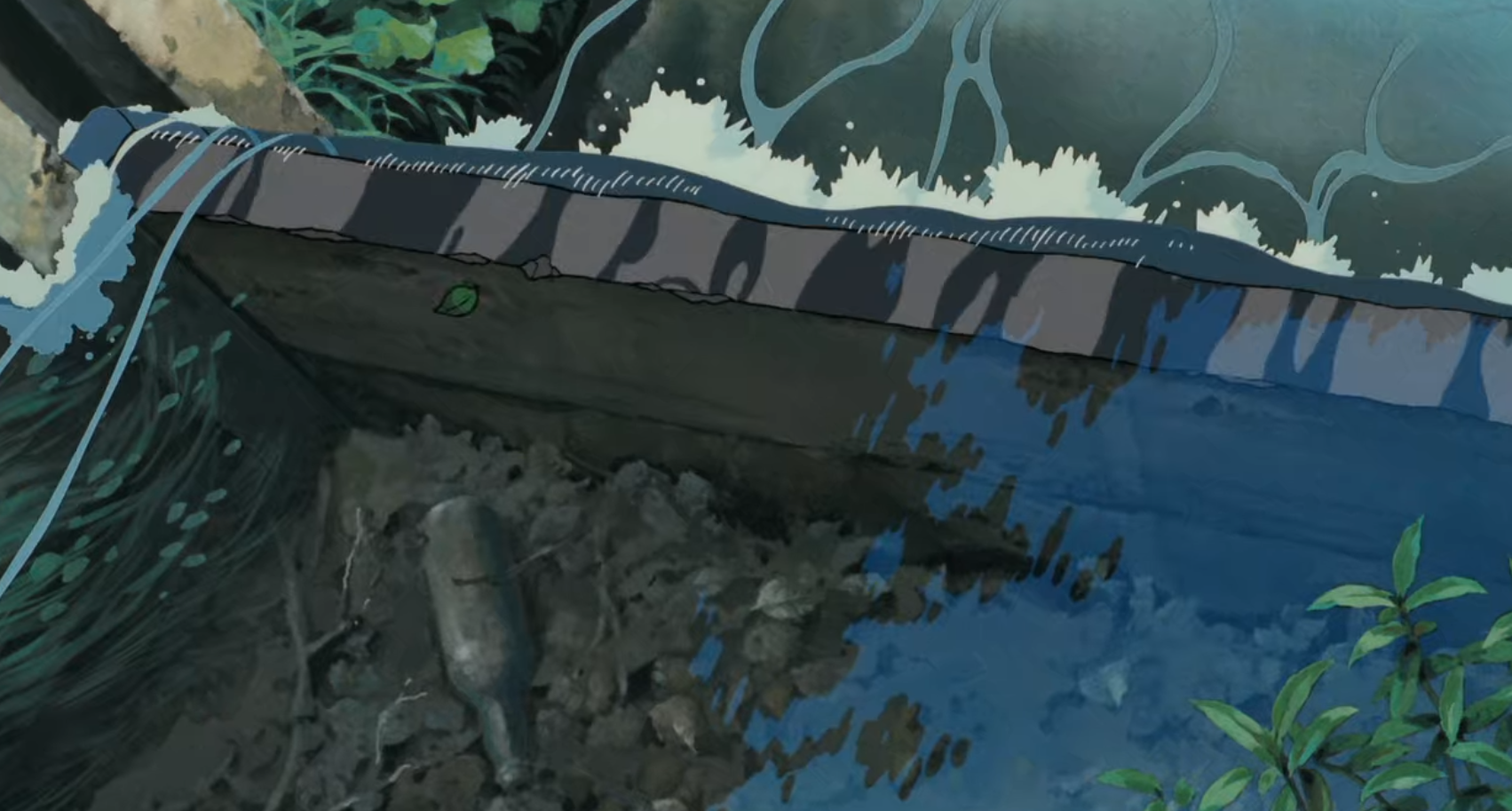
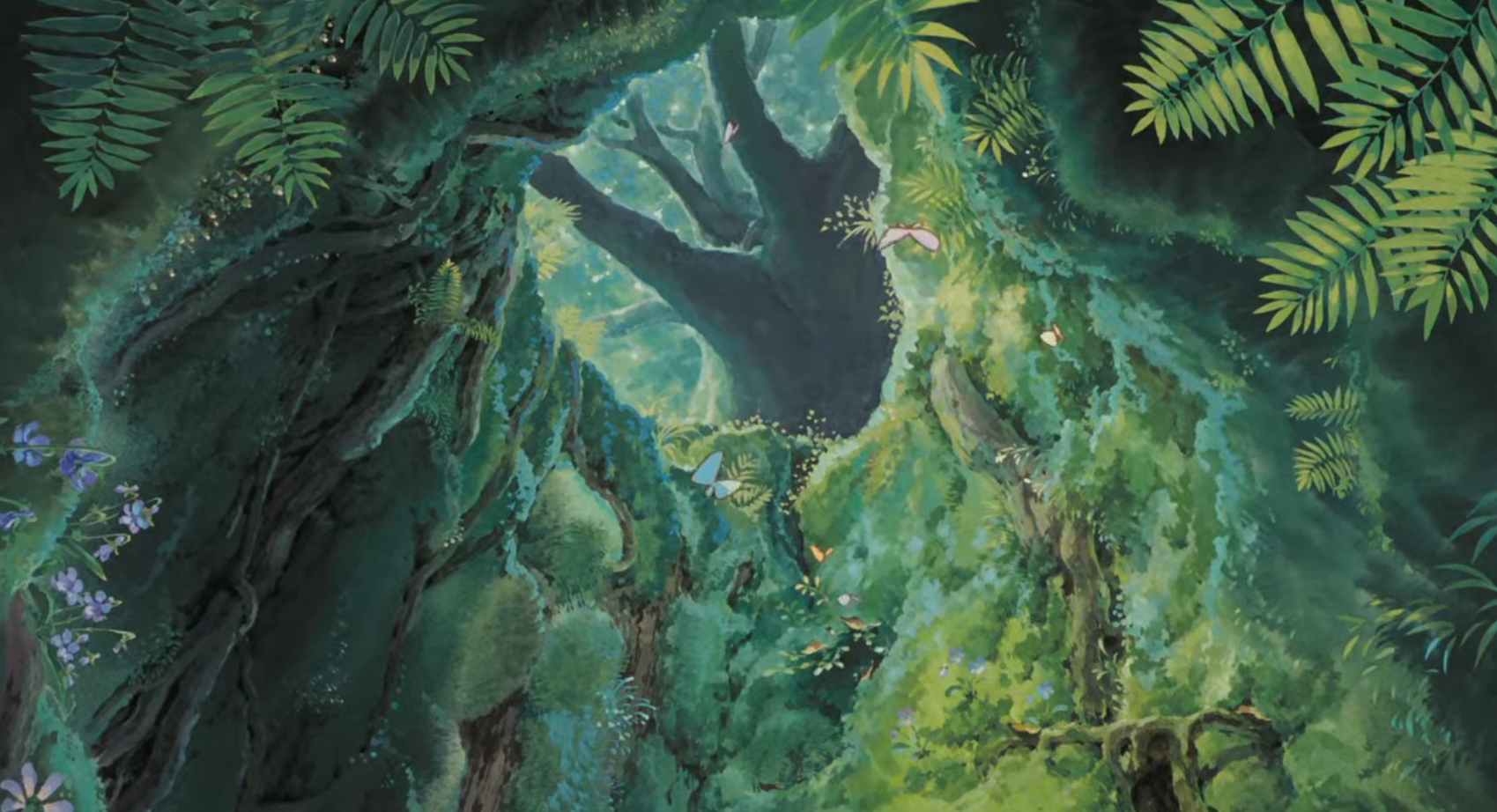
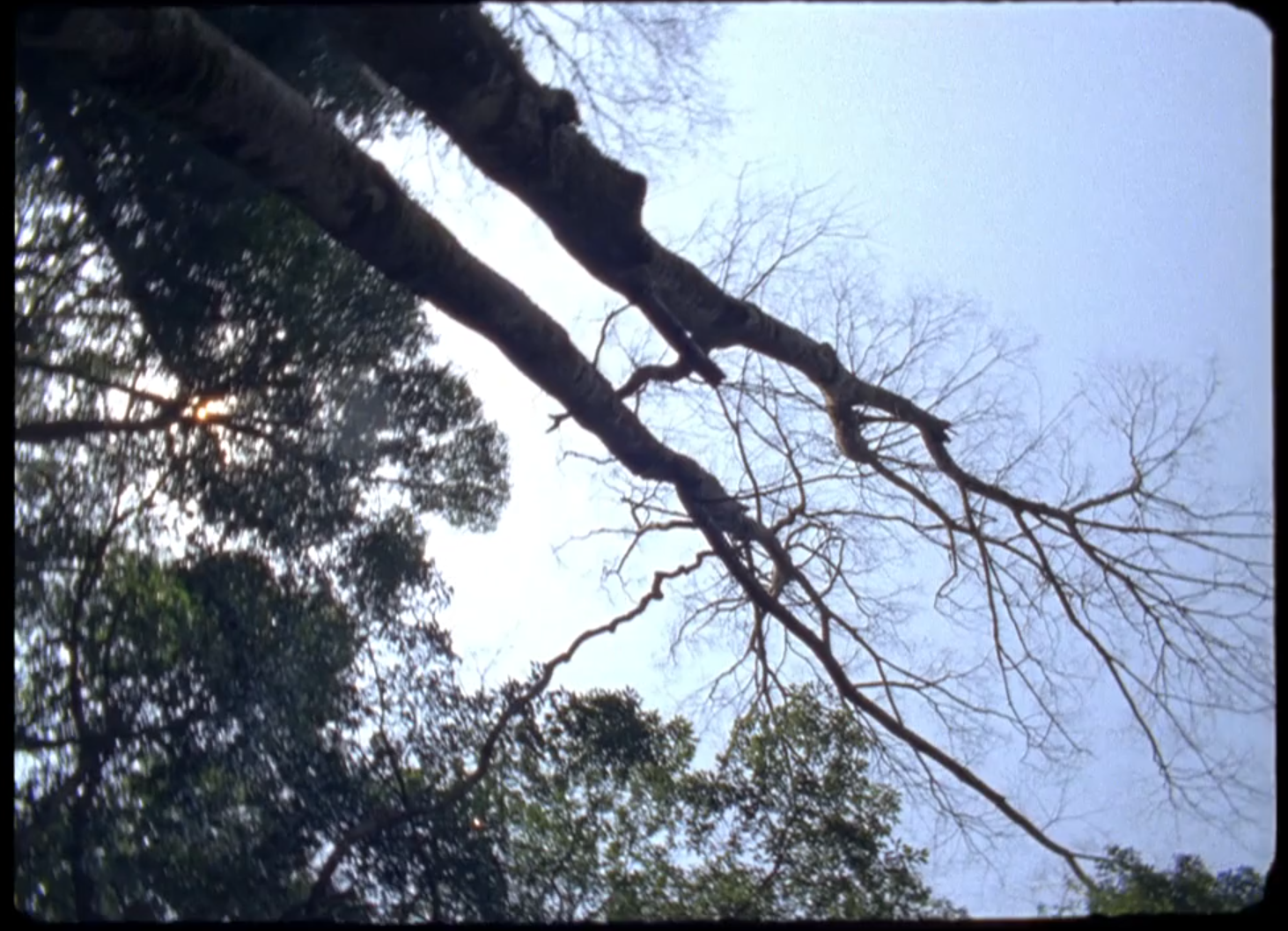
Fig 6 & 7, "My Neighbor Totoro" (1988), Hayao Myazaki (Studio Ghibli), retrieved from https://www.youtube.com/watch?v=92a7Hj0ijLs (0:02, 0:26)
Fig. 8, "Shape Shifting" (2015), Mikhial Lylov & Elke Marhöfer (with permission from the artists) (15:18)
Activity of Encounter and Energetics
In The Mushroom at the End of the World Anna Lowenhaupt Tsing writes about her encounter with processes of forest restoration in Japanese Satoyama landscapes. Apart from her reservation about human interventionist engagement with natural cycles, she emphasizes that in Satoyama forestry the “idea [precedes] that human activities should be part of the forest in the same way as nonhuman activities” (2015, 152). In Tsing’s project, which follows the complex world of the matsutake mushroom, the cultivation of landscape is not a mere human intervention. By deploying the term “active landscapes” she suggests an unintentional “overlapping [of] worldmaking processes” between humans and more-than-humans shaping the design of a landscape (2015, 152). How does the spiritual and animistic aspects of the landscape, as explored in My Neighbor Totoro come into play here? Rather than adding human spirituality through the animistic cast of religious practice, I want to point at a prior animist quality immanent to the activity of encounter. Different from classic anthropological castings of animism as ritual and religious practice in so-called “primitive cultures” the term foregrounds the energetic entanglements which exceed a reductionist model of discrete and quantifiable values. These excessive powers of material, embodied, sensuous and abstract relations have concrete effects only if they exceed a logic of parts being assembled into a whole or an entity. Such an intricate relationality which follows the energetic relays of the sensuous, the material, and the abstract occurs when perceptual habits shift and are challenged. I perceive these shifts of perception in the film Shape Shifting (2015) by Mikhail Lylov and Elke Marhöfer, shot in Japanese Satoyama landscapes. Their 16mm exploration of the landscape has been cast by the artists as new materialist filmmaking. The images depict a variety of activities as part of contemporary economies, from agriculture in the more traditional engagement with the land to more recent projects trying to transform the landscape into an energy resource.
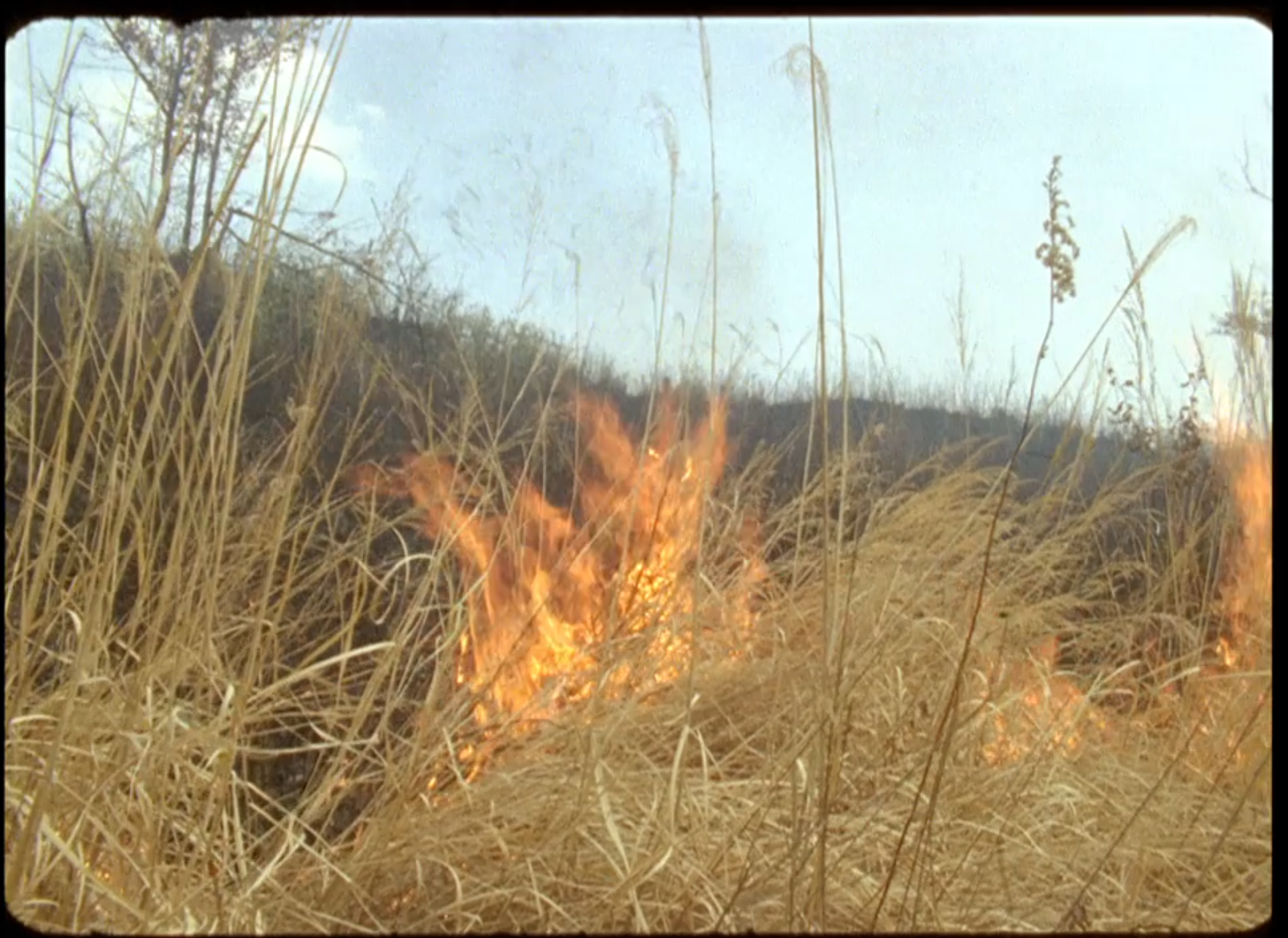
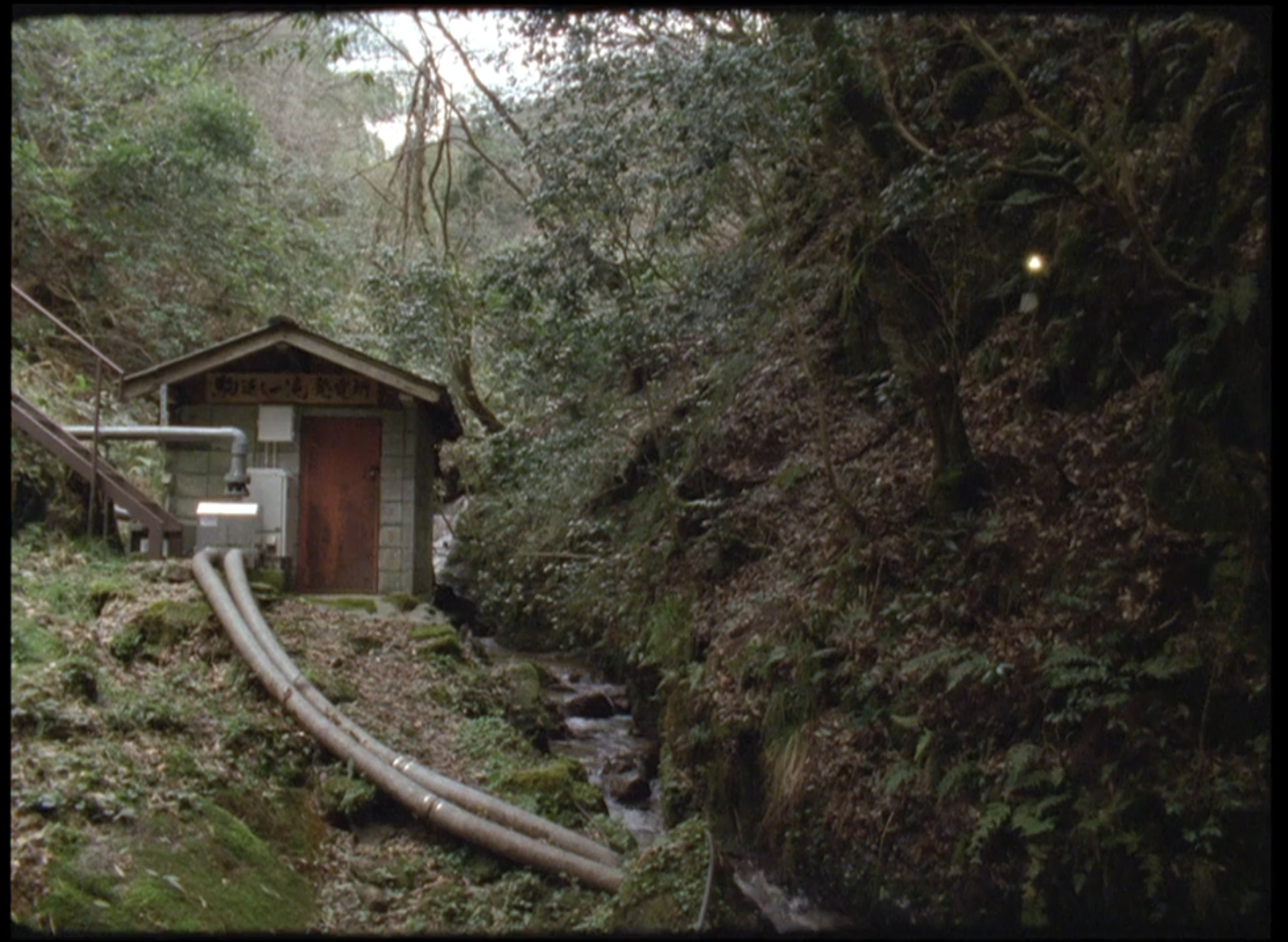
Fig. 9 & 10, "Shape Shifting" (2015), Mikhial Lylov & Elke Marhöfer (with permission from the artists) (3:53, 16:04)
Energy is key to both, material transfers of unintentional design and mutual enabling of overlapping world-making processes and the relaying of different modes of production. When the two girls fly with Totoro through the landscape Satsuki exclaims “we are the wind” and the wind in itself is simultaneously present in the process of careful burning or pruning dominant flower species in order to increase biodiversity, the rustling of the trees in the forest or the small windmills’ spinning in Shape Shifting. Wouldn’t it be worth exploring a “general energetics” (Simondon 2005, 556) which allows for a taking account of the different lines of activation that traverse the animistic, material, sensuous and abstract realms in their collective activity of world-making? Such openings occur in the rough analogue texture of the 16mm tape in conjunction with burning grass, operating machines an of explosive flora that was in touch with a human project but then diverted otherwise.
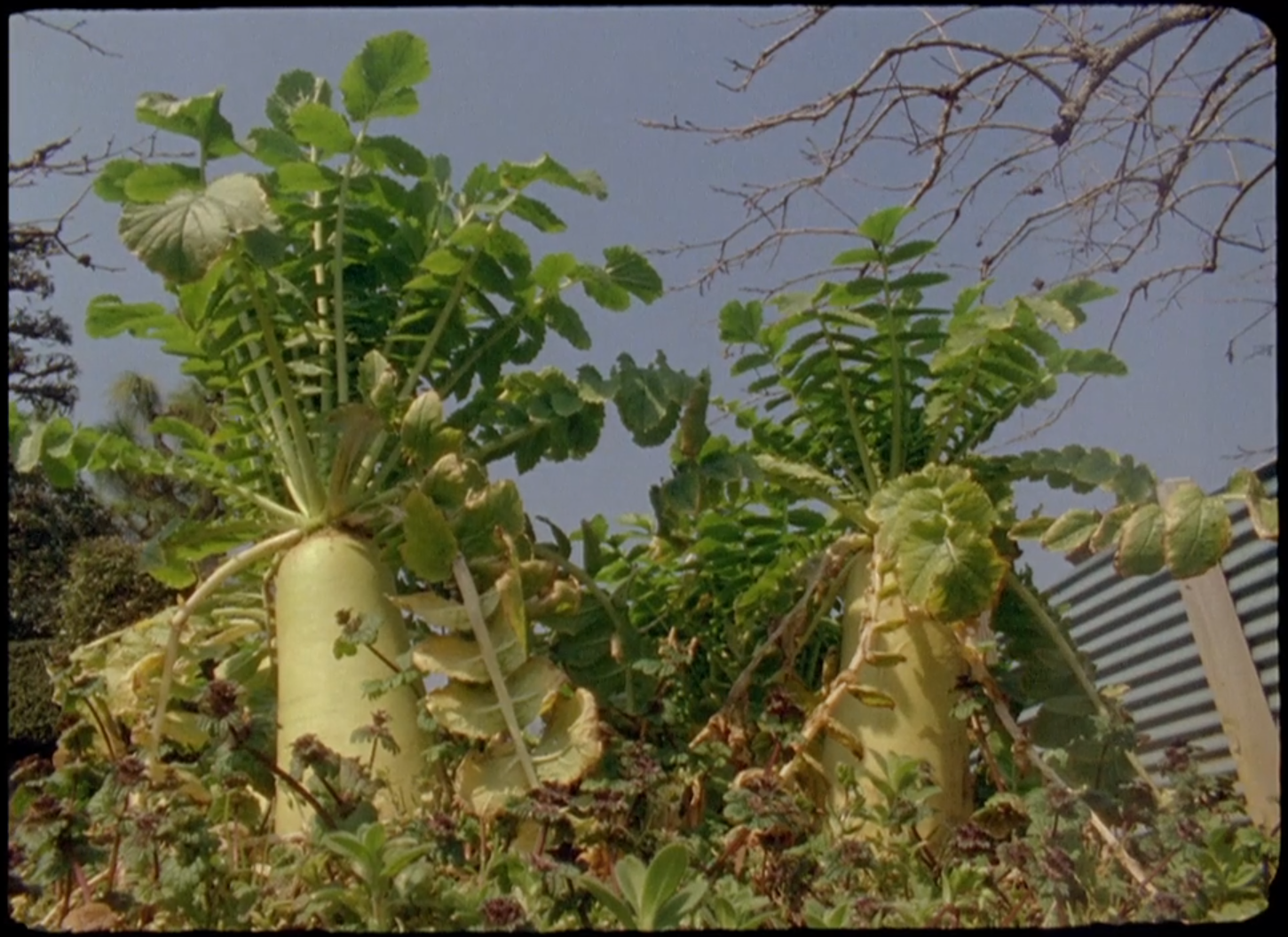
Fig. 11, "Shape Shifting" (2015), Mikhial Lylov & Elke Marhöfer (with permission from the artists) (12:23)
Noticing Sympoietically
“Can I show landscape as the protagonist of an adventure in which humans are only one kind of participant?“ (Tsing 1995, 155). What the two films do, is to create a variety of resonances which move through technological assemblages, that of the 16mm camera or the animation studio, the different technological interventions into Satoyama landscape, but also the animistic relations of sensing energetics that exceed material interconnection. The participation that Tsing wonders about needs to shift from a logic of different agents interacting to a more field-like enablement of activation along different energetic capacities which emerge through the landscape in this context. This is what Tsing terms a polyphonic take on assemblages which exceeds the interconnective logic of discrete elements synthesizing into a whole. The practice of noticing as a technique of interlacing polyphonic rhythms concerns heterogeneous and partially intersecting temporalities in differential processes of world-making. In resonance with Donna Haraway’s take on Marylin Strathern’s notion of “partial connections” these polyphonic modes of noticing have to take account of both the overall temporality of becoming as the base-rhythm of activation and the differential becomings-with of the singular rhythms of world-making. Sympoiesis in the context of an animated Satoyama landscape are as much concretely material as they are of potential futurities which populate the sensuous and are felt in bodies and in thought.
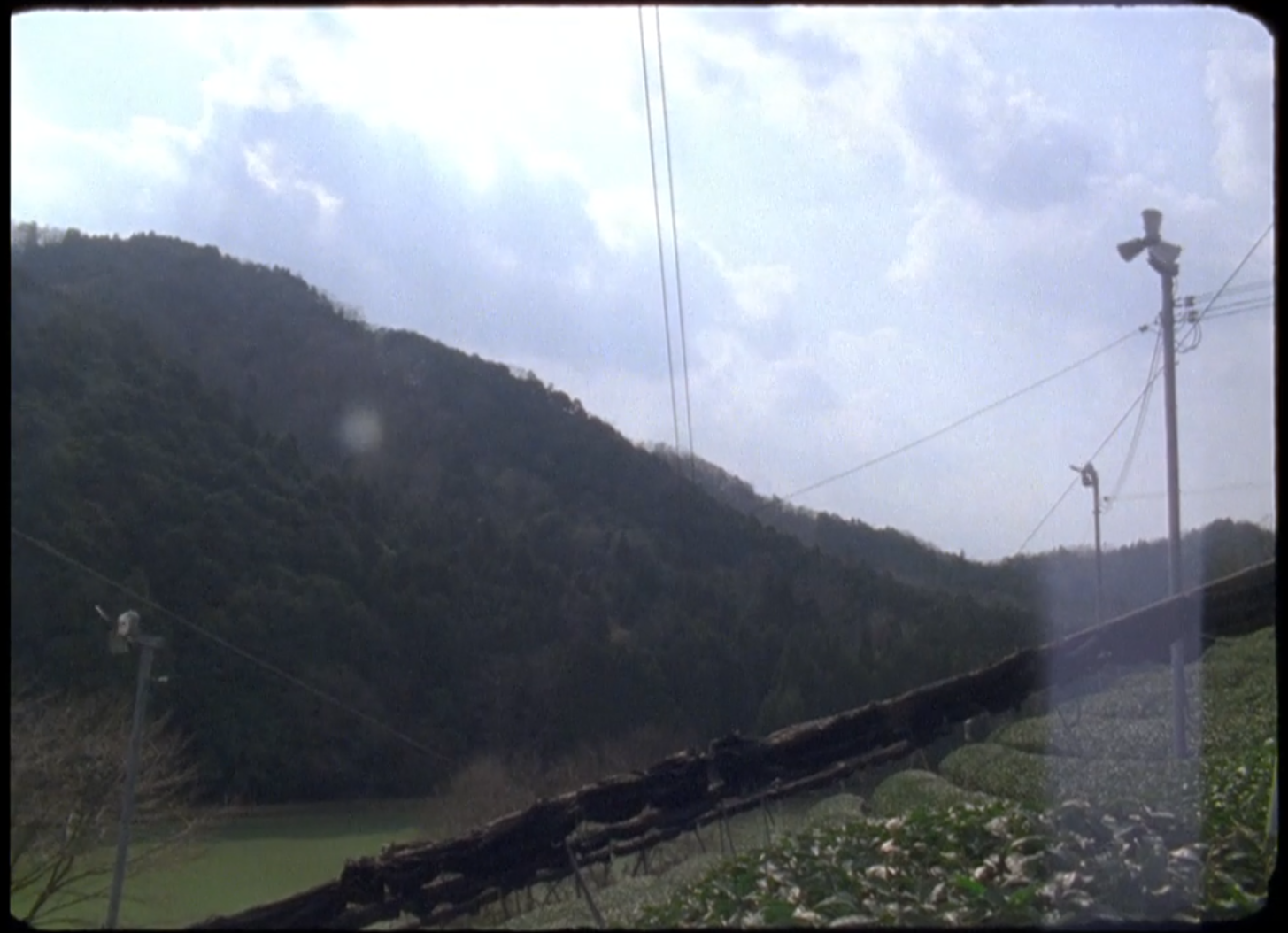
Fig. 11, "Shape Shifting" (2015), Mikhial Lylov & Elke Marhöfer (with permission from the artists) (17:58)
Images
All images from My Neighbor Totoro (1988, Studio Ghibli, Hayao Miyazaki) are taken from the official trailers accessible at: https://www.youtube.com/watch?v=S19k5S0GlNo and https://www.youtube.com/watch?v=92a7Hj0ijLs and have been used as "fair dealing" (fair use) in accordance to Canadian copyright law in the context of academic research, review and critique.
All images from Shape Shifting (2015, Mikhial Lylov and Elke Marhöfer) are used with permission by the artists.
References
Sergei Eisenstein, "Disney", in: Anselm Franke, Animism (Vol. I), (Berlin: Sternberg Press, 2010), 118-124.
Anselm Franke, Animism (Vol. I), (Berlin: Sternberg Press, 2010).
Donna Jeanne Haraway, Staying with the Trouble: Making Kin in the Chthulucene (Durham: Duke University Press, 2016).
Thomas Lamarre, "Animation and animism", in: B. Boehrer, M. Hand, & B. Massumi (Hrsg.), Animals, Animality, and Literature (Cambridge: Cambridge University Press, 2018), 284–300.
Anna Lowenhaupt Tsing, The Mushroom at the End of the World: On the Possibility of Life in Capitalist Ruins (Princeton: Princeton University Press, 2015).
Gilbert Simondon, L’individuation à la lumière des notions de forme et d’information, Krisis (Grenoble: Millon, 2005).
Isabelle Stengers, "Reclaiming Animism", in: Anselm Franke and Sabine Folie (ed.), Animism: Modernity through the Looking Glass, (Berlin: Verlag der Buchhandlung Walther Konig /Vienna: Generali Foundation, 2011), 183–191.
